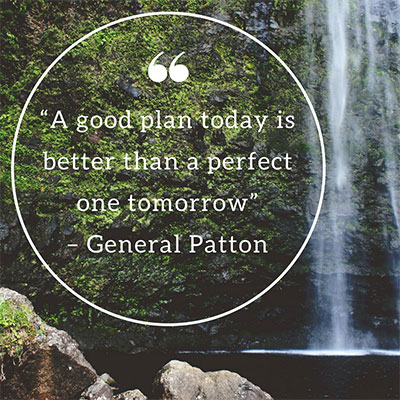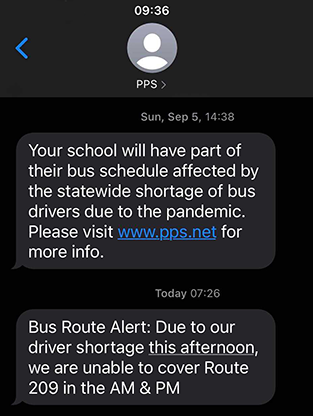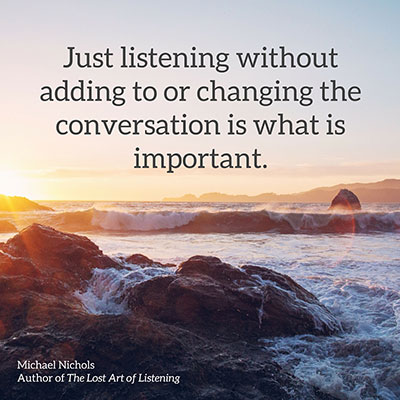How To Refresh Your Strategic Plan (in 4 Hours or Less)

We all know (or should know) that strategic planning is a necessity for business. If you don’t know where you’re going, how will you know when you get there.
Updating and ensuring that your plan is still viable is also a necessity. According to an Ernst & Young study, a full 66% of corporate strategy is never executed with one explanation being that they simply no longer reflect your business or circumstances.
Finding the right time for your group to get together and take a fresh look at your future can be difficult when the daily details of running the business are staring you in the face. Still, it’s imperative to know that your future plans still make sense and your current projects are aligned with that future.
Today’s blog covers an outline that can guide you through a morning of conversation to get back in touch with the future you created a while back and adjust it as necessary.
Is it Time to Update Your Plan for the Future?
All strategic plans become outdated quickly. After a few months or a year, we are always going to be in a different place from where we were when first formulating the plan.
Maybe your circumstances have changed, or you’ve had remarkable progress, or simply learned about your business or a project in ways that it makes sense to take some time and discuss where you are and where you want to go.
We aren’t proposing a 4 day or 4 week or even 4 month process–this is intended to simply be a 3-4 hour conversation.
Who This Planning Process is For
First, this is not a full-blown, start from scratch, “we’ve never done strategic planning before” type of activity. If you’re just starting your plan, take a look at our Introduction to Strategic Planning.
The process I’m about to explain is for:
- Groups that already have a strategic plan,
- Groups that know their plan isn’t really up to date, and
- Those who don’t have the time or interest in working on a more formal update.
Many companies formally plan every year, and have monthly and/or quarterly strategy course correction meetings. This process is for the group that knows they should do a refresh, but doesn’t want or need to invest a huge amount of time into it.
The Framework for a Simple Strategic Plan Refresh
The Invitation
In the invitation, be sure to provide the reasoning behind the strategic planning and the process that will be followed.
This is not the time to call a meeting on the fly – you won’t get the quality answers your company needs. Allow attendees to think through the questions posed below ahead of time so they can bring ideas to the meeting.
Be sure someone is designated to document answers and outcomes, and update the plan for distribution later.
The Meeting Flow
This is the sequence for the meeting, and you’ll find a detailed explanation of each item afterwards. Feel free to adjust the times or tailor these items to your company.
Intro:
- Welcome everyone and thank them for their participation.
- Discuss the intended outcomes for the meeting.
Questions for Discussion:
- What have we accomplished since we implemented the strategic plan? (Or a time frame that makes sense to the group) (30 minutes)
- In what ways has our current reality changed since we put together our long term goals? (20 minutes)
Setting aside the strategic plan for now:
- What are we expected to produce—leadership or stakeholders will be upset if we don’t deliver this? (15 minutes)
- What do we see that we can definitely do if we choose to take it on? (15 minutes)
- What do we think might be possible but can’t guarantee? (15 minutes)
- On our best days, what do we dream about being able to do? (10 minutes)
- In our current reality and projects, what is noise to us and what are we passionate about? (30 minutes)
Now what:
Reflecting back on all of these conversations, what makes sense for us to do next?
The Thinking Behind This Design
During the welcome item, answer this question for attendees:
Why does reviewing and updating your plan make sense now?
Strategic plans, yearly goals, and project outcomes are either informing and empowering your work or they are not.
The question is simple and elegant: Is our focus for the next three weeks still being shaped by our longer term ambitions?
Intended Outcomes
The intention is not to rewrite anything. The intention is to:
- Identify what goals or approaches need changing, and
- Identify actions that need to be taken.
Starting with Accomplishments
Maintaining a culture of accomplishment and fulfillment is one of the jobs of leadership. Why? Because no matter how much we do, there will be more to do.
Management will keep raising the bar and as individuals we also know we work better when we are pushing the limits of our own capability.
The following questions are designed to remind ourselves and each other of everything that we have accomplished so that when we go forward we do so know we are already really good.
- What should we be proud of?
- What results have we produced?
- What do our stakeholders say we have accomplished?
- What have we made possible that wasn’t possible before?
- What limits and problems have we uncovered that we were not aware of earlier.
- What new thinking do we have?
- What breakthroughs have we produced?
- What new approaches have we created?
- What have we learned?
- What new capabilities do we have as individuals; as an organization?
- What language is returning to us?
What is our current reality?
What were we facing and thinking about when we put together our five year plan? Has anything changed about that reality for which need to adjust?
What are we expected to produce?
Strategic plans often do not reflect the many of the expectations that others have for us that must also be delivered upon.
It’s worth spending some time to surface any areas that the group might feel we’ve let slip or are at risk because we haven’t been focused on them.
What do we now see that we can accomplish if we choose to take it on?
This is in addition to the original plan. No one is asking for this but we might decide to add this to our list of work.
What might be possible?
We may not be able to guarantee, but we can see what perhaps could be possible. As we get into the execution of this plan, what has become possible that we couldn’t see earlier?
On our best days, what dreams come to us?
This is an opportunity to share our best moments for forward thinking. These dreams are kept at bay by our current obstacles and long list of things to do. Still, it’s useful to play with this conversation for ten minutes to keep as much possibility as we can in front of us.
What’s noise in this project?
Noise for you might be fun for me. Perhaps that report writing or grant writing keeps getting pushed to back of your line. Knowing what areas that we each struggle with can provide opportunities for help or even reassignment of tasks.
Reflecting back, what seems to make sense for us to pursue?
Okay, now what? Given these conversations, what should we do?
A Template to Help You Get Started
I’ve worked with Lucid Meetings to create a template based on these best practices. It’s intended for groups that already have a strategic plan that’s out of date and don’t have the time, resources or need to engage in a more formal update.
View the template details and share your feedback. What works for your company when updating a strategic plan?
Download the Facilitator’s Guide
The Leader’s Guide to Strategic Plan Refresher
This 10-page Facilitator’s PDF Guide includes:
- Agenda
- Step by Step Instructions
- Before, During and After the Meeting Steps
- Links to Additional Resources



